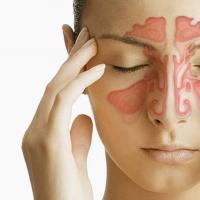What to do with acute form of pancreatitis?
Acute pancreatitis is an inflammation of the pancreas that occurs suddenly. The attack causes very severe pain in the upper abdomen and lasts for several days. Inflammation that occurs in a mild form often does not require medical intervention and goes away on its own. In severe cases, it can provoke complications that are incompatible with life. Such situations require emergency hospitalization of the victim. With untimely medical care, mortality rates range from 5 to 30%. Regardless of the form of the course of the disease - mild, moderate or severe, pain in the abdomen is a serious reason to see a doctor.
What is acute pancreatitis and how does the disease manifest itself?
The hallmark of acute pancreatitis is severe, sudden pain in the upper abdomen, just below the sternum, that comes on in waves, often, and intensely until it becomes constant. In 50% of cases, the pain is felt in the lower abdomen and spreads to the back.
Other characteristic manifestations in acute inflammation of the pancreas:
- loss of appetite caused by a lack of pancreatic enzymes released into the intestines;
- acute pains in the abdominal cavity of various localization, which increase after eating, coughing, deep breathing, touching the stomach;
- in the supine position, the pain is worse than in the sitting position;
- severe nausea and vomiting, even in the absence of vomit;
- due to a lack of digestive enzymes, bloating occurs, the patient is tormented by frequent loose stools with a pungent odor, flatulence;
- rapid pulse - from 100 to 140 beats per minute, frequent and shallow breathing;
- fever and fever over 38°C;
- the skin and whites of the eyes become yellowish;
- persistent pain, in which even potent painkillers do not help.
The fetal position slightly relieves the symptoms of acute pancreatitis. If, even while sitting still, you experience pain and cannot find a comfortable position, contact your doctor immediately.
Causes and mechanism of development
The pancreas is an organ that produces digestive enzymes and hormones that regulate the uptake of glucose by all body cells. Digestive gland enzymes normally begin to work only in the intestines. But in the acute course of pancreatitis, they are activated ahead of time, not yet leaving the gland, irritating its walls and causing inflammation. With repeated acute attacks of pancreatitis, the mucous membranes of the pancreas are damaged, scars form at the site of the damaged tissue. Because of this, it gradually loses its functions. This leads to chronic pancreatitis, digestive problems and diabetes.
In more than 10% of cases, the disease is called idiopathic, that is, its cause cannot be found.The main causes of acute pancreatitis include:
- Gallstones. They cause about 40% of cases of the disease. Moving along the bile ducts, they block the junction of the ducts of the gallbladder and pancreas. As a result, pancreatic juice cannot leave the gland, accumulates in it, destroying tissues.
- Excessive alcohol consumption causes acute attacks of pancreatitis in about 30% of cases. The risk of developing the disease increases with an increase in the daily consumption of alcoholic beverages above 40 g of pure alcohol per day for men and 30 g for women.
- Mechanical damage to the pancreas during injuries, operations on the gallbladder, instrumental studies.
- Elevated levels of triglycerides and calcium in the blood.
- Viral infections - mumps, cytomegalovirus and their complications.
- Cystic fibrosis is a formidable disease that damages not only the pancreas, but also the lungs, liver, and other organs.
- Taking estrogens, steroids, some antibiotics.
- Smoking.
- Kidney transplant.
What diseases can resemble acute pancreatitis
There are a number of diseases that can resemble an attack of pancreatitis with their symptoms:
- Cholecystitis, or inflammation of the gallbladder. Accompanied by acute undulating bouts of pain, nausea, vomiting and yellowing of the skin.
- Perforated ulcer of the stomach or duodenum. Causes severe acute pain in the upper abdomen, nausea, vomiting.
- Attack of acute appendicitis. The pain is growing in nature, it is noted in the lower abdomen on the right. The patient is sick, the temperature rises.
- Myocardial infarction. The victim has general weakness, severe retrosternal pain, rapid shallow breathing.
- Food poisoning. Causes severe diarrhea, bloating and pain in the lower abdomen, weakness from loss of large amounts of fluid.
Possible Complications
Acute pancreatitis leads to an imbalance of all the chemical elements of our body, causing severe complications:
- Pseudocyst - formed as a result of necrosis of the pancreas. It may go away on its own, but sometimes it breaks through, causing infection and bleeding.
- Infection of the inflamed pancreas. The body becomes vulnerable to bacteria. Immediate surgery is required to remove the infected tissue to avoid purulent pancreatitis.
- Severe damage to the lungs, heart, liver, kidneys, developing as a result of a sharp damage to the pancreas. At the same time, its activated enzymes and toxins penetrate the bloodstream, lower blood pressure, cause general organ failure, and lead to serious complications, up to death.
- Diabetes occurs when the cells that produce insulin are damaged.
- Swelling of the upper abdomen - appears when fluid accumulates in the abdominal cavity due to a decrease in intestinal motility.
- Malnutrition. Systematic attacks of pancreatitis lead to a lack of digestive enzymes. This disrupts the absorption of nutrients, leads to malnutrition, diarrhea, weight loss.
- Pancreatic cancer - prolonged and systematic inflammation in the gland is a risk factor for the development of cancer.
Prompt and effective treatment of pancreatitis reduces the risk of complications. Therefore, it is important to seek the help of specialists at the first acute symptoms.
Which doctor to contact
A characteristic symptom of the acute form of pancreatitis is a tense abdominal wall and pain when probing the peritoneum.
 If, as a result of a preliminary examination, the family doctor suspects pancreatitis, you should contact a specialist dealing with problems of the digestive tract - a gastroenterologist.
If, as a result of a preliminary examination, the family doctor suspects pancreatitis, you should contact a specialist dealing with problems of the digestive tract - a gastroenterologist. To make a diagnosis, a blood test is prescribed and hardware examinations of the diseased organ are performed:
- Ultrasound of the abdominal organs;
- computed tomography of the pancreas;
- magnetic resonance cholangiopancreatography - a special MRI that allows you to examine the pancreatic and bile ducts;
- endoscopic retrograde cholangiopancreatography - the procedure allows not only to view the ducts, but also to remove gallstones.
Treatment of acute pancreatitis
The treatment regimen for acute pancreatitis will depend on the severity of the symptoms. The therapy includes the following steps:
- elimination of pain syndrome;
- the introduction of a sufficient amount of fluid;
- nutrition support;
- performing endoscopy or surgery if the acute attack is caused by gallstones or pseudocysts.
Medical treatment
In the presence of mild to moderate symptoms, treatment for acute pancreatitis in the hospital includes the following procedures:
- Starvation. The patient does not take food for several days to allow the pancreas to rest. After the disappearance of pain, the cessation of nausea and vomiting, semi-liquid food can be introduced into the diet - cereals, soups, as well as drinks (kefir, weak tea).
- Taking painkillers to relieve pain. For this, Tramadol, Baralgin, various types of blockades are prescribed.
- Preventing dehydration, which worsens symptoms and increases the risk of complications.
Patients with severe symptoms of pancreatitis are treated in the intensive care unit, where their vital signs are constantly monitored - pulse, pressure, breathing rate and urine production.
The patient is prescribed:
- antibiotics to prevent infection, such as metronidazole, ciprofloxacin, and others;
- intravenous administration of solutions of sodium chloride and potassium chloride to eliminate dehydration;
- a pulmonary ventilator to help the patient breathe;
- to maintain the required volume of blood, patients with low blood pressure are injected intravenously with solutions of Polyglukin, Albumin, etc.;
- to feed seriously ill patients, thin tubes are used, which are inserted through the nose and stomach into the small intestine.
The patient remains in the intensive care unit until the risk of organ failure, hypovolemic shock and sepsis disappears.
Surgical intervention
If the cause of acute pancreatitis is blocked bile or pancreatic ducts, then an endoscopic procedure is used to open or widen these ducts.
In case of blockage of the ducts by gallstones, doctors recommend removing the gallbladder.
Folk methods
An acute attack of pancreatitis occurs suddenly and develops very quickly. For its diagnosis and therapy, complex examinations, modern medical equipment, medicines, solid professional experience and hospital conditions are required. Given the rate of development of complications in this pathology, the use of alternative methods will lead to the loss of precious time, which is fraught with death. It will be possible to use folk remedies after the relief of acute symptoms, and only in agreement with the doctor.
Diet after treatment
After leaving the walls of the hospital, it is necessary to continue the recovery of the body after an attack of pancreatitis. The main role here belongs to the diet:
- Stop drinking alcohol. If you can not do it yourself, use special programs to get rid of addiction.
- Quit smoking. If you don't smoke, then don't start.
- Choose a diet low in fat, rich in fresh fruits and vegetables, whole grains, and lean meats.
- Drink more pure water.
Forecast and prevention
An acute attack of pancreatitis causes severe short-term pain. Depending on the severity of the attack, it can be treated in a hospital within 1-2 weeks. Frequent and recurrent outbreaks of the disease lead to chronic problems and complications. Timely treatment, feasible physical activity, a healthy lifestyle will allow you to eliminate the risk of possible relapses, live comfortably and without pain.



